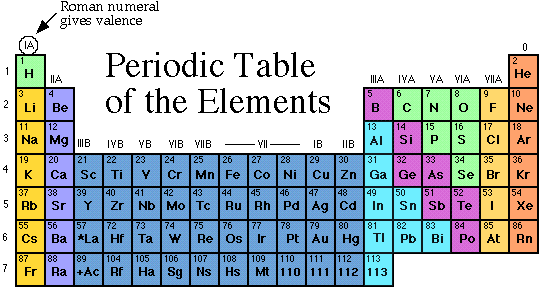TRANSTION METALS!

the transition metals are the ones in the middle, colored in a shade of blue
some background information on transition metals:
- The transition elements are also known as the d-block elements, because while the outermost level contains at most two electrons, their next to outermost main levels have incompletely filled d sub-orbitals, which are filled-up progressively on going across the periodic table from 8to 18 electrons. The filling of the d sub-orbitals of the transition elements across a row of the periodic table is not always regular.
- There are four transition series :
The first transition series : Scandium (Sc) through Copper (Cu): 3d subshell is filling.
Irregularities are observed for Chromium, Cr, and Copper, Cu, because the listed electronic configurations are energetically favoured (i.e. 3d54s1 is more stable than 3d44s2, and 3d104s1 is more stable than 3d94s1 respectively.).
The second transition series : Yttrium (Y) through Silver (Ag): 4d subshell is filling.
Irregularities are observed for Nb which skips from 4d25s2 to 4d45s1, and Pd, which goes from 4d85s2 to 4d105s1.
The third transition series : Lanthanum (La) to Hafnium (Hf) through Gold (Au)): 5d subshell is filling.
Irregularities are observed for Pt which skips from 5d96s2 to 5d106s1.
The forth transition series which is incomplete : Actinium (Ac) to element 104 through element 109: 6d subshell is filling , If elements 110 and 111 are found then this will complete this series..
*Chemical Properties:
- less reactive than group 1 or 2 metals
- mostly form colored compounds
- are important catalysts in industry
- can form compounds with more than one formula
- can bond using the two outermost shells
- orbitals can hold up to 18 or 32 electrons
Apart from Copper, the transition metals are all white lustrous metals.
Most compounds of the transition metal are coloured. There are variations in colour for compounds of the same valency, and with different valency (oxidation) states. For example,
A Coordination Complex is a compound in which molecules or ions form coordinate bonds to a central metal atom or ion. The complex may contain positive ions, negative ions or neutral molecules. The formation of such coordination complexes is typical behaviour of transition metals.
Physical Properties
Some other noticable characteristics which most transitional metals have are that they are:
- hard, dense, and shiny
- good conductors of heat and electricity
- malleable
- ductile
- have the highest melting and boiling points
- some are magnetic
- boiling points range from 356.58˚ to 5660˚ C
- melting points range from -38.87˚ to 3410˚C
*Some intresting uses:
Interesting Facts/ Uses
- platinum cuts down pollution from cars
- cobalt is used to treat cancer patients
- copper is used in pipes and wire
- titanium oxide is used in white paint
- tungsten is used for filaments in light bulbs
- water tanks are coated with zinc
- the elements towards the bottom left are more metallic, and the elements towards the top right are less metallic
- the elements towards the bottom left have larger atoms, and the elements towards the top right have smaller atoms
- iron, cobalt and nickel are the only elements known to create a magnetic field
- here are some useful links to learn more at:
http://www.teachmetuition.co.uk/Chemistry/Transition_Metals/transition_elements.htm
http://www.chemicalelements.com/groups/transition.html
Comments (0)
You don't have permission to comment on this page.